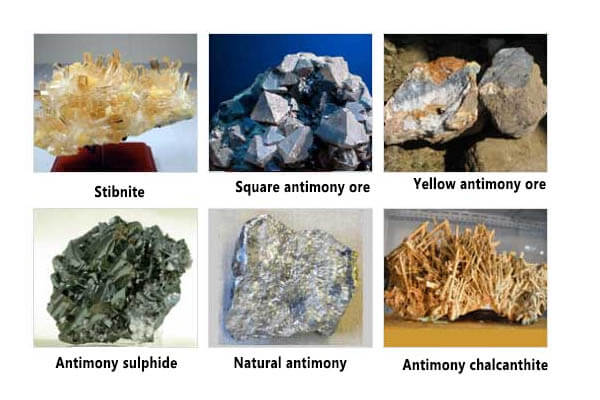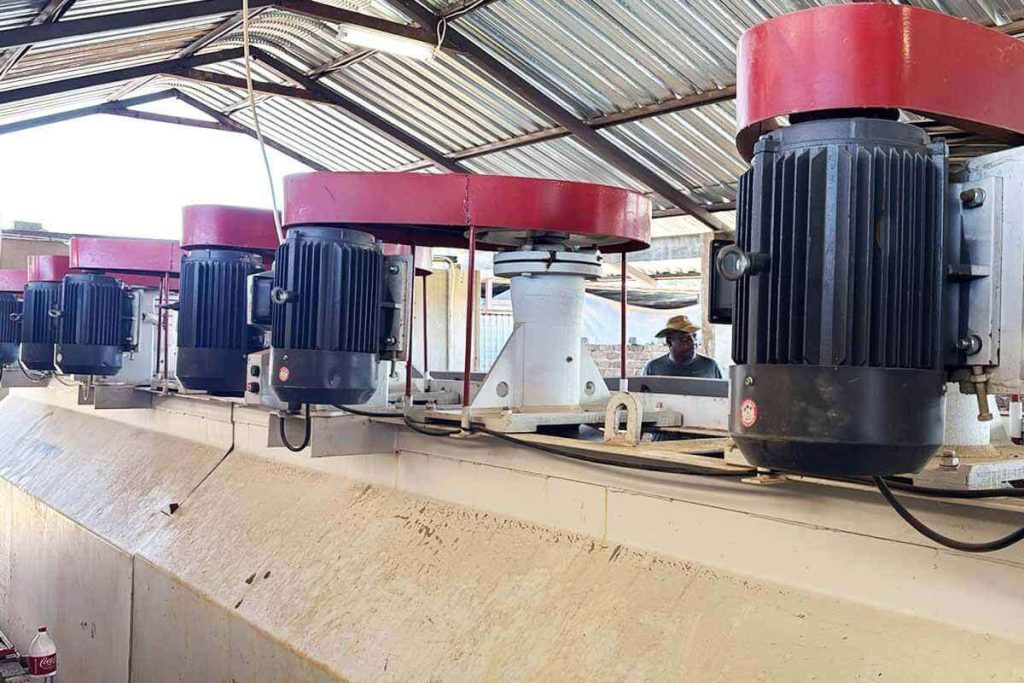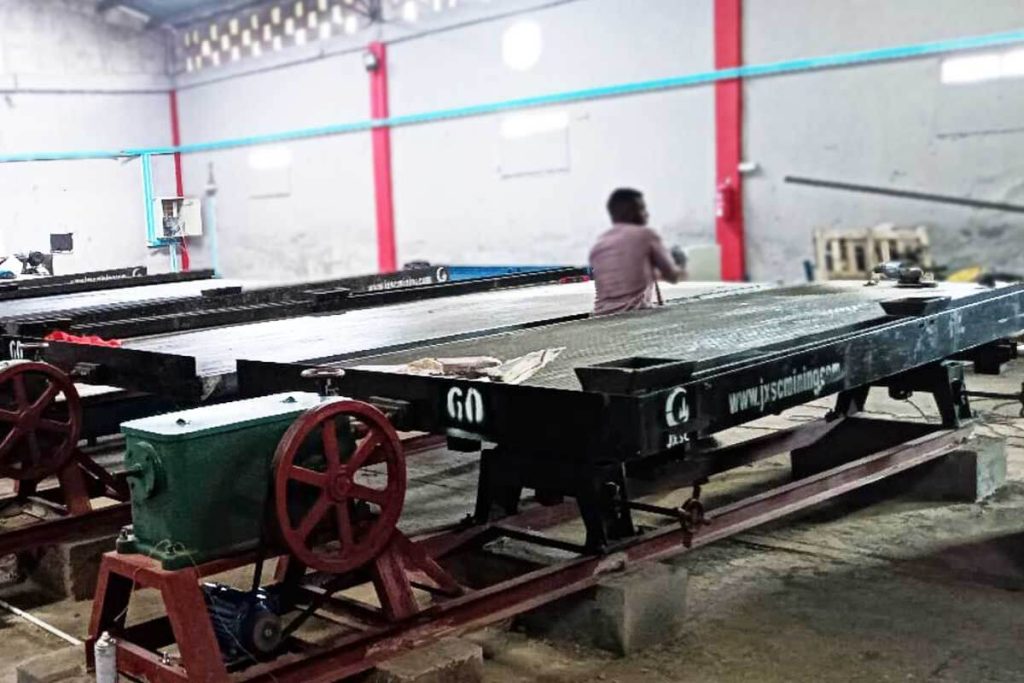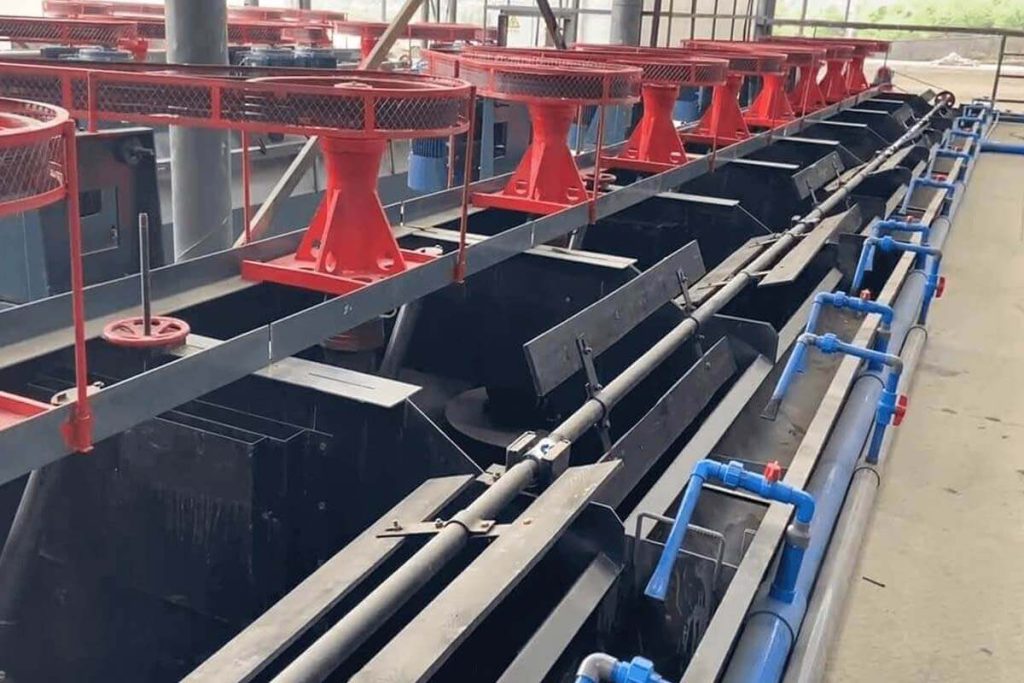Antimony (Sb) is a scarce resource and a silvery-white metal. It is brittle, fragile, and corrosion-resistant. It is widely used in flame retardants, alloy materials, batteries, semiconductors, ammunition, and chemical industries. Antimony ore refers to a mineral aggregate containing antimony elements, mainly in the form of antimony sulfide, antimony oxide and mixed antimony ore. Among them, stibnite is the most common and important mineral in antimony ore and the main source of metallic antimony. The main purpose of mineral processing is to effectively separate antimony minerals from complex ores and enrich them into high-grade antimony concentrates to meet the needs of industrial applications. These minerals are usually accompanied by other sulfides, oxides and gangue minerals, making the antimony ore processing process complex and challenging. The antimony mineral processing methods usually includes gravity separation and flotation.
What is antimony ore?
Antimony is a silvery white, brittle and corrosion-resistant metal element, widely used in flame retardants, alloy materials, ammunition, semiconductors and chemical products. Antimony ore refers to a mineral aggregate containing antimony elements, mainly in the form of antimony sulfide and antimony oxide, and is the main source of extracting metallic antimony.
Main types of antimony ore
The natural types of antimony ore can be divided into three types: oxidized ore, mixed ore, and primary ore. The standard is divided according to the antimony oxidation rate (%): oxidized ore>50%, mixed ore 30%~50%, and primary ore <30%. But it mainly exists in the form of stibnite, stibnite, antimony sulphide, antimony lead sulfide, yellow antimony and natural antimony.
Among them, stibnite is the most important type of antimony ore, accounting for 70-80% of global production. It is widely distributed in China, Russia, Tajikistan, Bolivia, South Africa, Russia, Vietnam and Myanmar. As the world’s largest antimony producer, China has rich antimony ore resources. Antimony deposits are mainly distributed in Hunan, Guangxi, Guizhou and Yunnan.

Since antimony minerals are divided into antimony sulfide, antimony oxide or mixed ores; their composition is relatively complex and there are many associated minerals. Antimony mineral dressing mainly adopts gravity separation, flotation, magnetic separation and other combined processes to achieve efficient separation and enrichment by comprehensively considering their physical and chemical properties.
Antimony mineral processing analysis
Antimony sulfide mineral processing
Stibnite (Sb₂S₃) is the main mineral in antimony sulfide ore, mainly distributed in Hunan. It is the main source of extracting metallic antimony and is widely used in flame retardants, alloy materials, ammunition and other fields. It is lead gray, has a metallic luster, low hardness, and is easy to crush and grind. Antimony sulfide ore is usually associated with other sulfide minerals (such as pyrite, galena, etc.) and gangue minerals (such as quartz, calcite, etc.). Therefore, gravity separation-flotation or single flotation method is usually adopted in sulfide antimony ore processing.
Process
- Gravity separation: Due to the high density of stibnite (4.6 g/cm³), gravity separation is a common separation method. Commonly used gravity concentration equipment includes shaking table, spiral chute, etc. It is simple to operate, low cost and highly adaptable.
- Flotation: By adding specific collectors (such as yellow medicine, black medicine, etc.) and frothers, stibnite particles are attached to bubbles and float to the surface of the pulp. Flotation has a significant effect on fine-grained minerals and has high separation accuracy. If it is a single sulfide ore, it can be directly floated, with a recovery rate of up to 90% and a grade of 50-60%.
- Magnetic separation: Used to remove iron-containing magnetic minerals, such as pyrite.

Antimony oxide mineral processing
Antimony oxide ore is also an important source for extracting metallic antimony, and is widely distributed in Yunnan. However, it usually requires a complex beneficiation and smelting process. Among them, stibnite (Sb₂O₃) and antimony chalcanthite (Sb₂O₃) are the main minerals in antimony oxide ore, which are white or gray and have high hardness. Antimony oxide ore is usually associated with gangue minerals such as quartz and calcite, and the mineral particles are relatively fine. Therefore, the common beneficiation method is gravity separation process. According to the properties of the mineral, flotation can also be combined to improve the ore accuracy.
Process
- Flotation: Flotation is the main method for beneficiation of antimony oxide ore. Due to the complex surface properties of oxide minerals, specific collectors and adjusters (such as fatty acids, amines, etc.) are usually required to improve the hydrophobicity of the mineral surface. It has a significant effect on fine-grained minerals and high separation accuracy.
- Gravity separation: For some coarse-grained antimony oxide ores, gravity concentration methods such as shaking tables can be used. Simple operation and low cost.

Mixed antimony mineral processing
Mixed antimony ore refers to an ore containing both antimony sulfide and antimony oxide, usually accompanied by other sulfide and oxide minerals, as well as gangue minerals. The beneficiation process of mixed antimony ore is relatively complicated, and usually requires a reasonable combination of gravity separation, flotation or magnetic separation to effectively extract metallic antimony.
Process:
- Gravity separation: used for preliminary separation of minerals with higher density.
- Flotation: used to separate antimony sulfide and antimony oxide minerals.
- Magnetic separation: used to remove magnetic impurities.
- Multi-stage process: Due to the complex composition of the ore, a multi-stage beneficiation process is usually required, including roughing, concentrating and scavenging. Specifically, it is necessary to optimize the beneficiation process parameters, such as reagent dosage, pH value, flotation time, etc., according to the specific composition and properties of the ore.

Antimony sulfide ore mainly uses gravity separation and flotation methods, while antimony oxide ore relies more on re-selection or flotation, and mixed antimony ore requires a combination of multiple beneficiation methods. Due to the mineral characteristics of antimony sulfide ore, the antimony beneficiation process needs to comprehensively consider the physical and chemical properties of the ore, combining re-selection, flotation or magnetic separation methods to achieve efficient separation and enrichment. In order to effectively improve the recovery rate and concentrate quality of antimony and meet the needs of industrial applications, JXSC supports customized mineral processing solutions and equipment, contact us for more details!